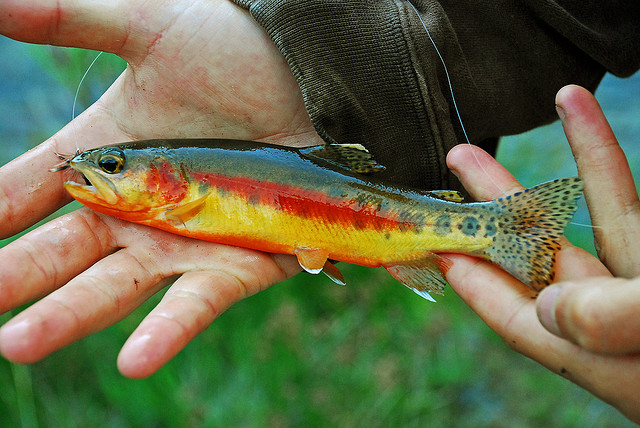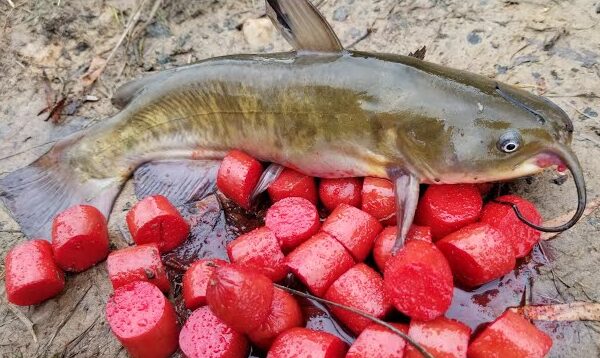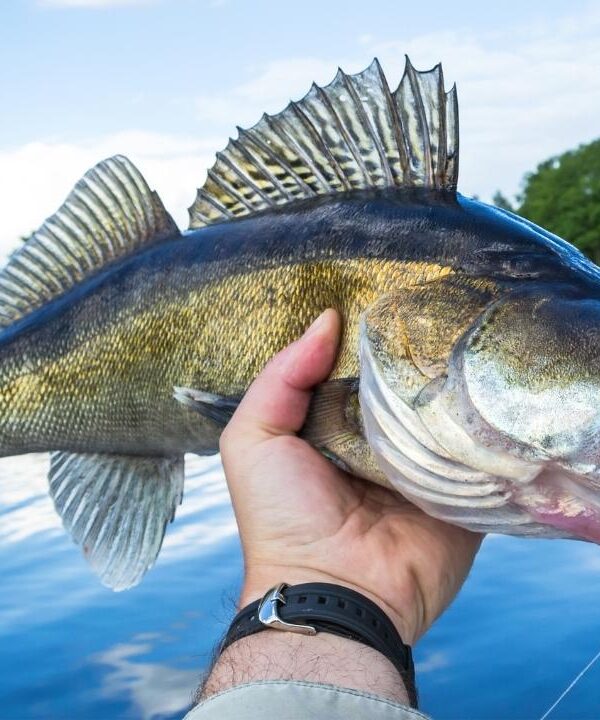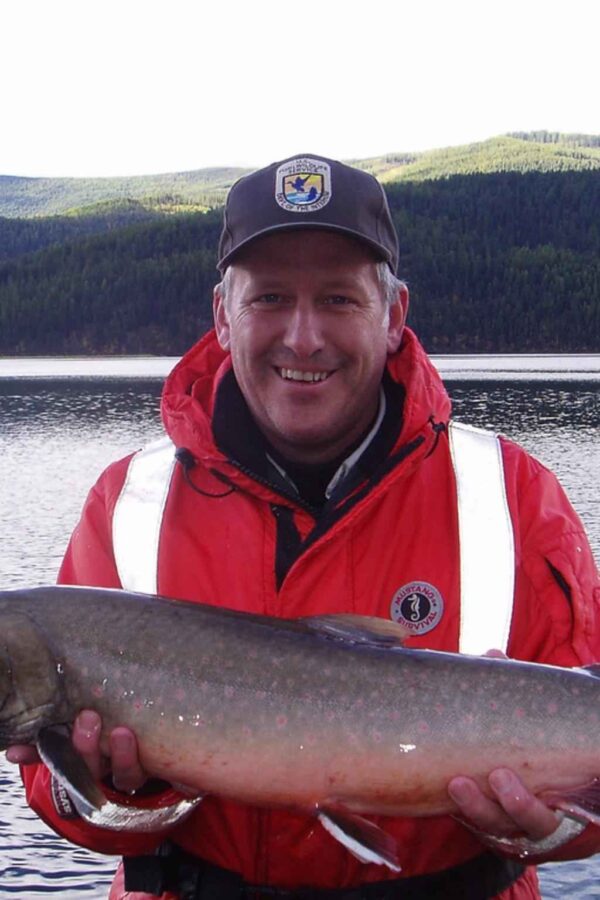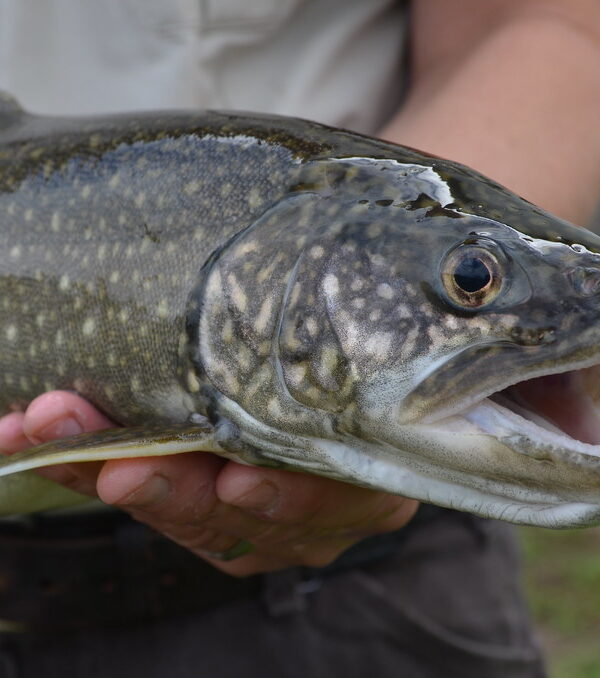Fishing for California’s Vibrant Golden Trout
The golden trout represents California’s state freshwater fish, treasured for its brilliant golden colors and wild beauty. This iconic fish evolved isolated in alpine lakes of the High Sierra above massive waterfalls blocking upstream migrations of other fish. Their geographic isolation intensified the golden’s vivid pigmentation beyond that of regular rainbow trout. Locating trout takes effort, but catching one creates lifelong memories.
Golden Trout’s Brilliant Coloration
True goldens feature bright yellow-gold bodies with vibrant red horizontal bands along their sides and bellies, along with black spots across the back and fins. Their exceptional coloring stems from unique genetic heritage and pristine cold, clear alpine lake habitat. Goldens average 6-12 inches in length, with some exceeding 2 pounds in ideal waters with minimal competition.
Camouflage Patterns
The vivid hues help camouflage trout against the open water backdrop and granite shorelines of their home lakes at elevations over 10,000 feet in the Sierra Nevada. Their bright patterns likely serve as visual communication for attracting mates and guarding territories during the spawning period.
Native Range and Habitat
Golden trout evolved as a unique form isolated above impassable Sierra Nevada waterfalls in a few remote alpine lakes of California’s Whitney Creek drainage and Golden Trout Creek. Introduced outside their native range, goldens now also live in high elevation lakes and streams of the southern Sierra, Wind River Range, and Yellowstone Park.
Requirements for Pristine Habitats
Surviving only in extremely clean, clear, cold alpine lakes and streams, goldens require perfect natural conditions. Habitat degradation, erosion, or the introduction of non-native competitive fish could threaten their existence. Protecting essential intact habitats represents a key conservation goal.
Spawning Behavior and Life Stages
Goldens live 3-4 years on average. Spawning takes place along gravel lake shoreline shallows or small feeder creeks during summer. Males intensify in coloration while guarding the fertilized eggs. Goldens feed on insects like mayflies, caddisflies, and other aquatic invertebrates abundant in these oligotrophic alpine lakes.
Remaining Wild Populations of Golden Trout
The continued existence of trout in their few native habitats provides a living connection to California’s natural heritage. Their wild origins mark them as a precious resource. Strict protections aim to prevent habitat loss and competition from invasive species that could threaten native golden trout.
Angling Techniques for Golden Trout
The remote isolation of their native waters limits fishing access. However, rewarding opportunities exist in other areas where they’ve been introduced. Small flies, spinners, and spoons mimic natural insects well for tempting trout. Stealthy approaches and light lines help overcome wariness in clear waters. Releasing unharmed fish is imperative.
Presenting Lures and Flies
Presenting flies and lures along drop-offs, underwater springs, inlets, and sections of wave-chopped water that mimic insects helps tempt trout while avoiding spooking them in transparent lakes. Their subtle takes require discernment to detect strikes. Drifting natural presentations often outperforms aggressive retrieves.
Protecting Populations Of Golden Trout
Native trout have been isolated above impassable barriers protecting them for thousands of years. However, human-caused habitat degradation could threaten their future. Monitoring and protecting essential spawning and rearing creeks keeps wild populations intact. Catch-and-release fishing helps ensure sustainable introduced fisheries.
Relic of Glacial Times
The isolation of trout traces to glacial periods when ancestral forms became trapped above impassable rocky gorges. Persisting from those ancient origins, ongoing stewardship can help secure their continued survival.
Significance of Golden Trout
More than a novelty, goldens symbolize the unique biodiversity generated in California’s High Sierra. They represent a living connection to the region’s wilderness heritage. Beyond fishing value, conserving trout honors the legacy of natural selection crafting them for alpine lake habitats. Sustaining golden trout inspires broader reflection on protecting all native species in their ecological niches.
Appeal to Anglers
Catching brilliant goldens creates lifelong memories of time spent in California’s beautiful remote settings. Their wild origins captivate anglers focused on fishing sustainably to protect golden trout for the future. Pursuing them near native lakes allows experiencing these natural wonders.
Interesting Facts About Golden Trout
- The current world record golden weighed 11 pounds caught from California’s Cook Lake in 1948, although fish over 2-3 pounds are rare.
- Selective breeding programs have created lighter hued palomino variations. However most stocking focuses on maintaining pure native strains.
- Golden trout often cruise in open water, allowing spotting and careful casting approaches. But their thin mouths mean handling with extreme care.
- Golden trout exceed typical rainbow trout in vivid gold pigmentation due to their isolated genetic heritage and cold alpine lake habitats.
- Beyond California, golden trout have been introduced to high mountain lakes in Wyoming, Montana, Colorado, and Canada to establish specialty fisheries.
Responsible Angling Practices
Always follow regulations on seasons and tackle that protect trout. Prioritize photographing catches over harvesting fish. Use barbless hooks, play fish rapidly on appropriate rods, and avoid over-handling golden trout. Preventing invasive species and preserving essential habitat allows sustaining native golden trout populations.
Conclusion
More than a novelty, golden trout symbolize the magnificent diversity of species crafted by natural selection in California’s High Sierra and other pristine habitats. Protecting their essential wild lake and stream ecosystems represents one way we can honor this unique fish long into the future.

